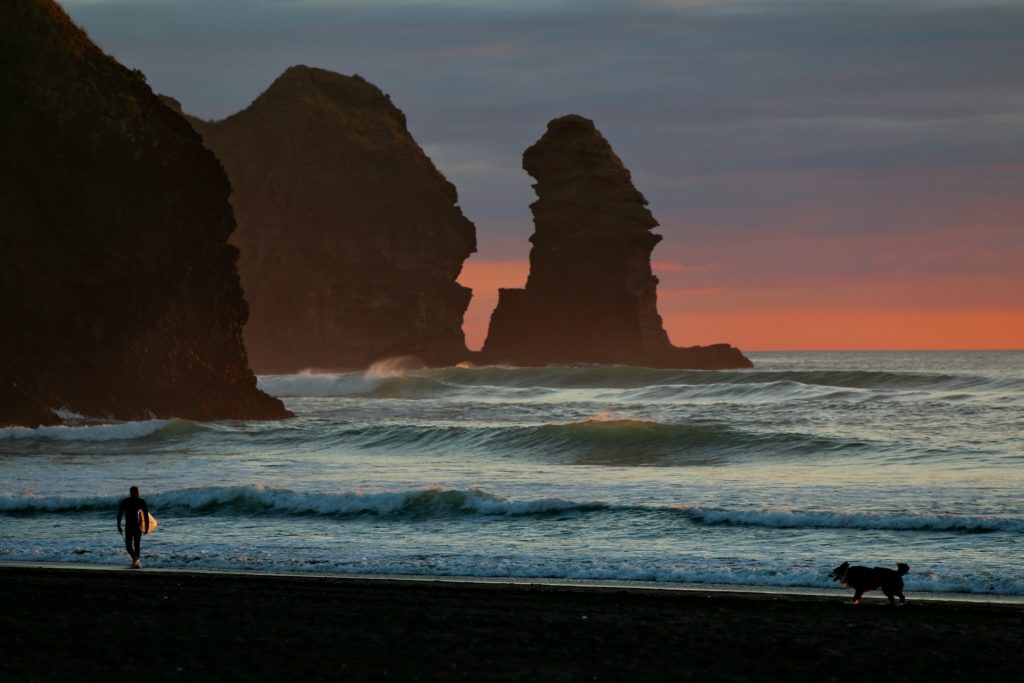Hawaii’s Big Island, known for its varied climate zones and diverse natural beauty, is a year-round destination. However, the best time to visit depends on a variety of factors including weather, activities, and prices. The Big Island of Hawaii presents a diverse climate that varies throughout the year. Understanding the weather patterns and temperature fluctuations is key to planning the perfect visit.
This guide delves into the nuances of each season, providing a monthly breakdown of weather patterns, tourist seasons, and the most suitable times for various activities. From the cool, invigorating winter months to the lively summer period, discover when to enjoy the Big Island’s offerings at their peak and when to find more tranquil moments on the island’s picturesque shores.
Best Time to Visit Hawaii Big Island: Unveiling Seasons
Hawaii’s Big Island boasts a unique climate characterized by two primary seasons: summer (Kau) from May to October and winter (Hoolio) from November to April. It’s known for having microclimates which means one can experience sunny coasts and snowy mountaintops on the same day.
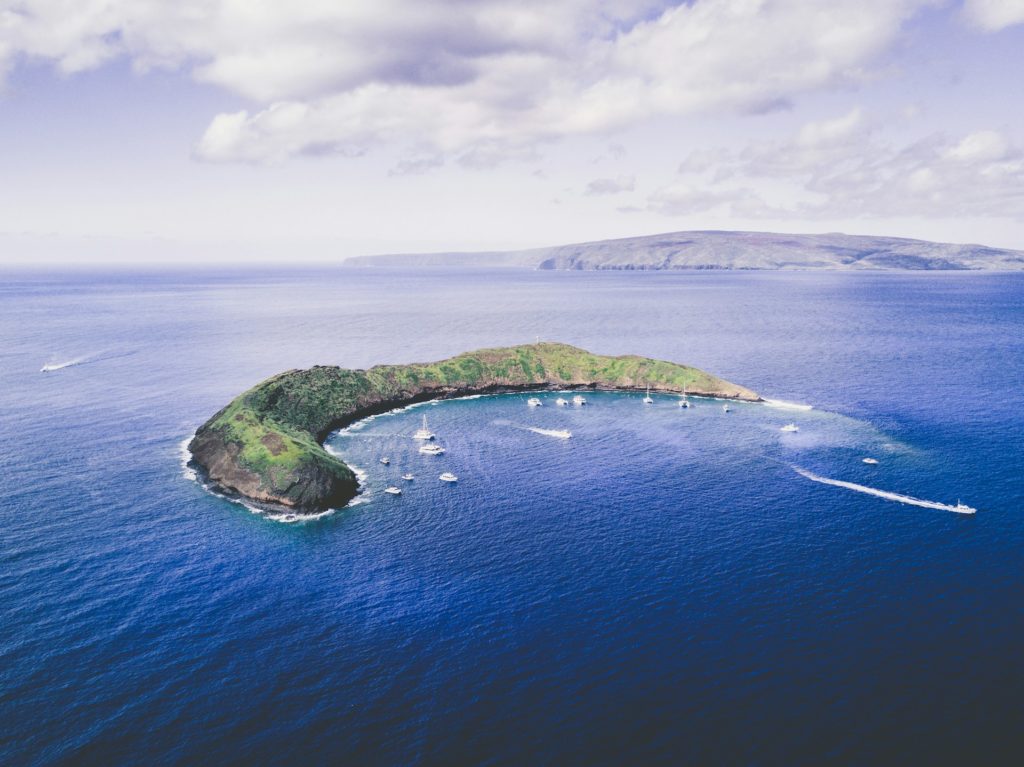
1. Weather and Climate Overview
Hawaii’s weather is renowned for being warm and tropical, making the Big Island a year-round destination for sun-seekers. Resort areas along the coastline enjoy average temperatures between 75-85°F in both winter and summer, providing a comfortable environment for beachgoers and outdoor enthusiasts alike.
While the island’s climate is generally stable, microclimates across different regions result in varied weather patterns. For example, Hilo’s inland areas may experience cooler temperatures, and the summits can be quite chilly. Regardless of your itinerary, it’s wise to be prepared for Hawaii’s diverse weather conditions.
2. Average Temperature and Precipitation Trends
The Kohala Coast on Hawaii’s Big Island is known for its warm and inviting weather, especially during summer when temperatures can soar above 85 degrees. If you’re seeking heat, this is the place to be, though the black lava fields can intensify the sensation of warmth. In winter, this side of the island remains relatively warm with average high temperatures hovering above 80 degrees throughout the year, making it a fantastic destination for those looking to escape chillier climates.
While summer welcomes higher temperatures, it’s also a period when the island can experience more rainfall. However, the precipitation patterns vary across the island, with some areas receiving more rain than others. Understanding these trends can help you plan your activities and choose the best locations to visit based on the season.
3. Peak Tourist Seasons and What to Expect
The Big Island’s peak tourist seasons occur in winter and summer, aligning with the influx of snowbirds escaping cold weather and families taking advantage of summer breaks. During these times, expect the island to be bustling with activity, from crowded beaches to popular attractions teeming with visitors. The vibrant atmosphere is palpable, with events and tours operating in full swing, providing a lively experience for those who enjoy a social vacation setting.
However, the increased demand during these periods can mean higher prices for accommodations and activities. If you’re planning to visit during peak seasons, it’s advisable to book well in advance to secure your desired lodging and experiences. Being prepared for the island’s busier times will ensure a smoother and more enjoyable visit to this tropical paradise.
4. Off-Peak Visits: Quieter Times on the Island
For a more relaxed experience, the best time to visit Hawaii is during the off-peak periods when the island’s room rates are most reasonable. These quieter times typically fall outside the busy winter and summer months, offering a chance to explore the Big Island without the crowds. Not only will you find better deals on accommodations, but you’ll also enjoy a more intimate connection with the island’s natural beauty and cultural heritage.
Off-peak travel also provides an opportunity for more interaction with locals and a deeper immersion into the Hawaiian lifestyle. With fewer tourists around, you can expect a more personal experience at attractions, restaurants, and during tours. Whether you’re lounging on less crowded beaches or taking a stroll through a tranquil botanical garden, off-peak visits can offer a serene and enriching Hawaiian adventure.
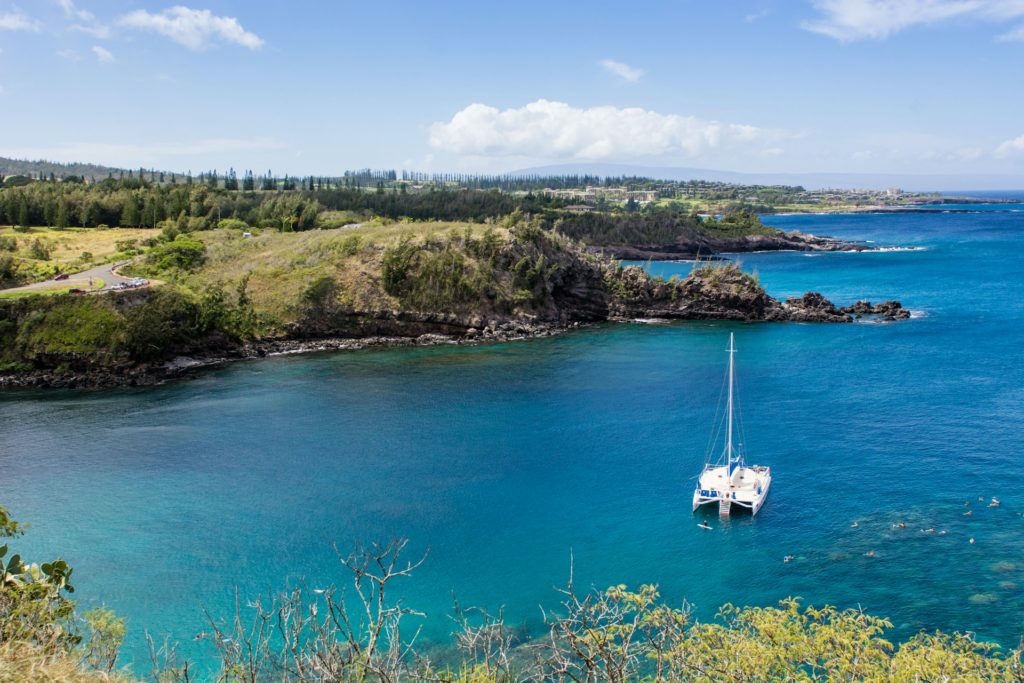
Best Time to Visit Hawaii Big Island: Monthly Breakdown
From winter waves to summer festivals, a monthly breakdown helps pinpoint the perfect time for your Hawaii Big Island trip.
1. January to March: Embracing Winter’s Charm
The beginning of the year is a prime season for visiting Hawaii’s Big Island, especially for those wishing to witness the migration of humpback whales. These majestic creatures grace the island’s waters, offering awe-inspiring sights for wildlife enthusiasts. While the temperatures are cooler, the island’s allure is not diminished, with the possibility of increased precipitation bringing a refreshing change to the landscape.
Surfers will also find January to March ideal, with the North Shore’s waves calling to those seeking the thrill of the ocean. Golfers can enjoy the Mitsubishi Electric Championship at Hualalai, an event on the PGA Tour Champions circuit, rounding out the diverse offerings of the season.
2. April to June: The Lure of Spring
As spring unfolds, visiting the Big Island of Hawaii becomes particularly enticing. Rates and demand tend to be lower, making it a great time for those looking for value in their travels. The island starts to buzz with anticipation as summer crowds begin to trickle in, and the cultural calendar comes alive with events like the grand parade, lei contests, and hula performances.
3. July to September: Summer Splendors
Visiting the Big Island of Hawaii from July to September offers a tapestry of summer splendors. While July and August bring a surge of family vacations, the later months provide a tranquil transition as the summer break winds down. The island’s lush landscapes and inviting beaches remain a draw for those seeking both relaxation and adventure.
During this period, the Hawaii Volcanoes National Park Cultural Festival is a noteworthy event, celebrating the island’s natural wonders and rich cultural heritage. It’s a time when the spirit of aloha is palpable, and the island’s heartbeat syncs with the rhythm of the Pacific.
4. October to December: Autumn Allure
As October arrives, Hawaii’s Big Island witnesses a notable dip in temperatures, making it an exceptional time for visitors to enjoy the island’s natural beauty without the peak season crowds. With demand and rates descending, you can relish a more serene experience. However, by November and December, expect the onset of wetter weather, with these months being among the wettest on the island.
For those looking to experience the unique festivities, the Kailua-Kona Christmas Parade is a highlight of the season, bringing a festive spirit to the island. Be mindful of the changing weather patterns, though, and prepare for the possibility of tropical storms, which can occasionally grace the island with their presence. When you plan your trip wisely, you can immerse yourself in the island’s autumn allure, avoiding the winter storm rush and enjoying the seasonal festivities.
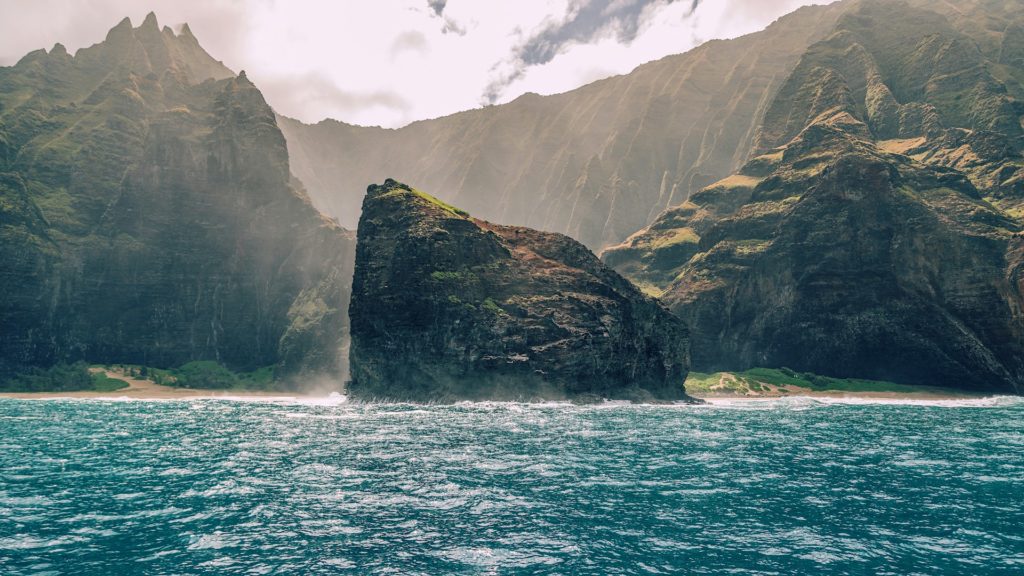
Best Time to Visit Hawaii Big Island by Activities
Whether you’re looking to escape the winter chill of mainland USA or simply experience the Big Island’s diverse activities, each season offers its charm. The season runs from outdoor adventures in the summer to cultural festivities in the spring.
1. Best Time for Diving and Snorkeling
The crystal-clear waters around the Big Island are spectacular year round, but the calmest and clearest conditions are during the summer months. While winter can bring rougher ocean conditions, the island’s leeward side often provides sheltered spots that remain accessible for underwater exploration. Just remember to book your aquatic adventures early in your trip to accommodate any weather-related rescheduling.
2. Best Time for Fishing
Summer months (March, April, May, and June) in the Big Island is the peak for reeling in species like skipjack and ono, while winter’s (October, November, December, January, and February) waters are rich with mahi-mahi. You can book a boat for full and three-quarter day fishing adventures to your favorite fishing spots.
3. Best Time for Hiking Trails
The best time to hit the hiking trails on the Big Island is generally during the drier summer months from May to October. During this time, you’ll encounter less rain, fewer muddy conditions, and more comfortable temperatures for being out on the trails. The winter months can bring more precipitation, especially in the lush, tropical regions like the Hilo side of the island. That said, the weather can be quite variable, so it’s always a good idea to check forecasts and pack layers when hiking on the Big Island. No matter when you go, be prepared for rapidly changing conditions – from sunny skies to sudden downpours – as you explore the island’s dramatic volcanic landscapes. Just be sure to bring plenty of water, sun protection, and sturdy hiking shoes to make the most of your Big Island hiking adventures.
4. Best Time for Exploring Lava Tubes and Viewing Volcanoes
The optimal time to see active volcanoes and lava flows on the Big Island is generally from May to October. During the drier summer months, Kilauea and Mauna Loa volcanoes are more likely to be active, with a higher chance of viewing lava flows, steam vents, and other volcanic activity. This is also the best season for exploring the island’s impressive lava tube systems, as the wet winter weather can sometimes make the trails slippery and dangerous. While volcanic activity is never guaranteed, your odds of witnessing a spectacular display of Pele’s power are greatly improved during the summer. Just be sure to check the latest updates from Hawaii Volcanoes National Park before your visit, as safety conditions can change rapidly. With the right timing, you’ll have the chance to get up close and personal with the Big Island’s volcanic wonders.
5. Best Time for Manta Ray Night Snorkeling
For a truly magical encounter, consider manta ray night snorkeling, a year-round attraction on the Big Island. While there is no specific season for seeing these graceful creatures, if you’re planning to visit during the winter, aim to schedule your snorkeling early in your vacation. This foresight allows for flexibility should rough ocean conditions necessitate a change in plans. The dance of the manta rays under the moonlit ocean is an unforgettable experience, ready to captivate those who venture into the night waters.
6. Kona Coffee Cultural Festival
In November, coffee enthusiasts unite for the Kona Coffee Cultural Festival, celebrating Hawaii’s renowned Kona coffee. This event is a perfect blend of local tradition and delicious flavors, set against the backdrop of the Big Island’s stunning landscapes. Though increased precipitation during this month can be expected, it doesn’t dampen the spirits of those gathering to honor the rich heritage of Kona coffee production.
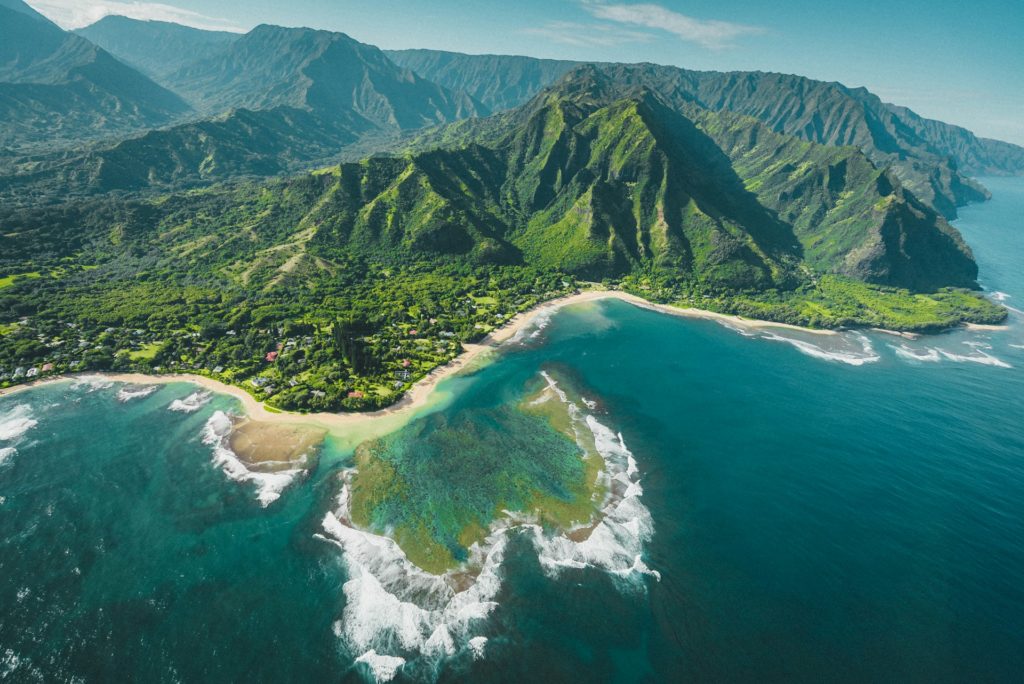
Travel Tips for the Best Time to Visit Hawaii Big Island
When considering when to visit the Big Island of Hawaii, a blend of factors should influence your decision. The season on the Big Island impacts everything from warm weather to hotel rates. Vacation rentals, rental cars, and travel tips can all guide your trip to Hawaii, ensuring the best weather and a memorable stay.
Tip 1: Booking Accommodations Strategically
The timing of your visit can significantly impact your accommodation options. The Merrie Monarch Festival and the Ironman Triathlon, particularly on the Kona side of the Big Island, see a surge in demand. Booking around these events requires strategy; reserve well in advance or consider the off-peak seasons for better rates.
Choosing the right time to book can either offer you a bustling festive atmosphere or a tranquil retreat. If you prefer quieter stays, avoid the busy periods around major events like the Merrie Monarch Festival and the Ironman Triathlon. Considering these aspects when planning your trip can lead to a more tailored and enjoyable experience on the Big Island.
Tip 2: Luxury Resort Stays vs Local B&Bs
Deciding between a luxury resort stay and a local B&B can shape your experience of Hawaiian culture. Resorts offer extensive amenities and structured activities, ideal for those seeking a more contained and service-rich environment. On the other hand, local B&Bs provide a more intimate setting, often connecting you more deeply with local customs and the spirit of ‘Aina – the Hawaiian concept of loving and respecting the land. Both options offer unique perspectives of island life, so consider what matters most for your travel experience.
Tip 3: Early Reservations and Last-Minute Deals
Securing your travel plans early can often lead to the best selection of accommodations and rates. Early reservations ensure you get your top choices for hotels, vacation rentals, and rental cars, particularly during peak seasons like the winter holidays. However, for the more spontaneous traveler, last-minute deals can sometimes yield unexpected savings. Keep an eye out for special promotions and be flexible with your travel dates to take advantage of these opportunities.
Tip 4: Transportation in Navigating the Island
When planning to visit the Big Island of Hawaii, consider how you’ll get around. The island’s size makes having a vehicle almost essential for exploring its diverse landscapes. While there’s public transportation in the form of the Hele-On bus service, it has limited routes and schedules, which might not align with your plans.
However, if you prefer not to drive, another option is to use tour shuttles offered by many resorts and activity providers. These can be a convenient way to visit popular attractions without the hassle of navigation. Just keep in mind that relying solely on shuttles may limit your ability to spontaneously venture off the beaten path or visit more remote areas of the island.
Tip 5: Car Rentals and Public Transportation Tips
To fully enjoy your visit to the Big Island of Hawaii, renting a car is highly recommended. It allows you the freedom to explore the island’s vast geography at your own pace. Book your rental well in advance, especially during high seasons, to ensure availability and competitive rates. Keep an eye out for rental agencies located at the Kona and Hilo airports, as they offer convenient pick-up and drop-off options.
If you’re budget-conscious or environmentally minded, public transportation is available, but know that it can be less reliable and more time-consuming. The Hele-On bus services key towns and destinations but with infrequent schedules, it’s not ideal for tight itineraries. For short distances within towns, consider walking or biking, which are not only eco-friendly but also offer a more intimate experience of the island’s natural beauty.
Tip 6: Tour Packages With Premium Experiences
For an exceptional experience, consider booking a tour package that caters to your interests. Whether you’re eager to explore the volcanic landscapes, delve into the rich Hawaiian culture, or enjoy water activities, there’s a premium tour for you. Plan your trip with a reputable company that offers small group sizes for a more personalized experience and includes knowledgeable guides who can share in-depth information about the Big Island’s history and ecosystems.
Final Thoughts on Visiting Hawaii’s Big Island
Visiting Hawaii’s Big Island offers a diverse array of experiences, from watching humpback whales birth their young during the prime season to participating in the Kona Coffee Cultural Festival. The island weather can vary, so packing a light jacket for evenings or the occasional storm system is wise. With temperatures often around 80 degrees, there truly isn’t a wrong time to visit this majestic destination.
Remember to consider rental vehicles for ease of exploration and to engage with Hawaii’s famous marine life through activities like manta ray night snorkeling. Whether you’re drawn by the festive lantern floating ceremonies or the serene off-peak moments, the Big Island’s wonders await you year-round.
